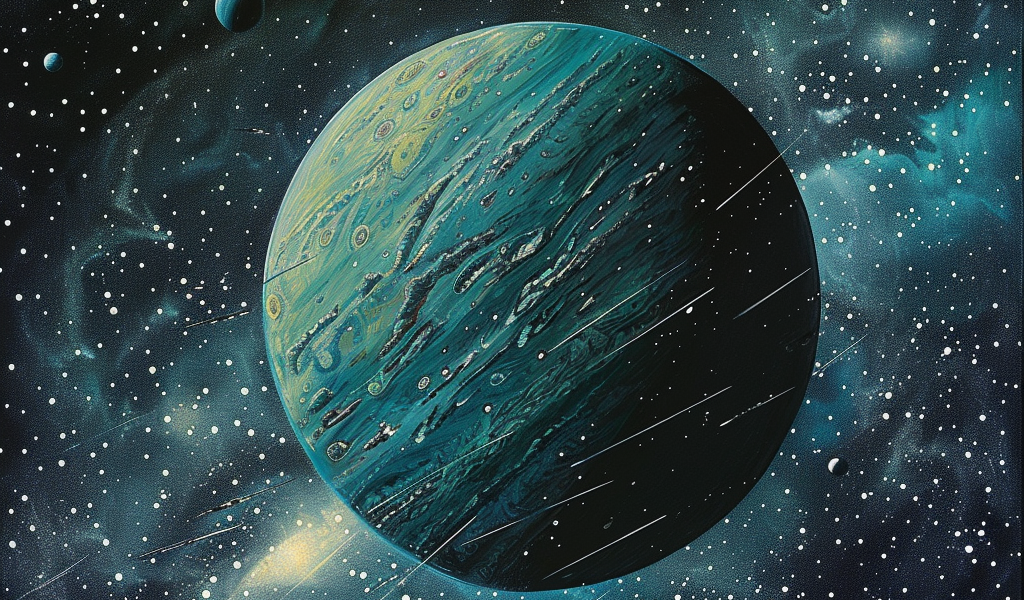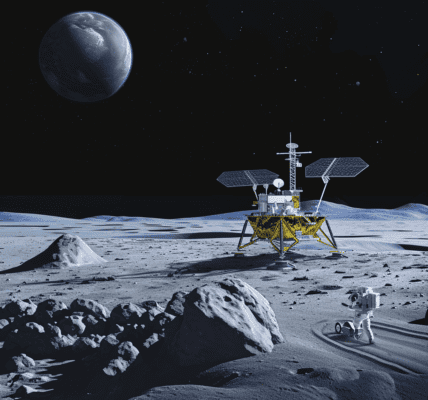NASA has recently accomplished a remarkable feat by utilizing both the Hubble Space Telescope and the New Horizons Pluto probe to capture unprecedented images of Uranus, the seventh planet from the Sun. This collaboration between two of NASA’s most iconic spacecraft has provided scientists with valuable insights into the icy giant, which is known for its frigid temperatures and unique atmospheric characteristics.
The images obtained from this joint effort showcase Uranus from two distinct perspectives. The Hubble Space Telescope delivered high-resolution images, revealing intricate details of the planet’s atmosphere. In contrast, the New Horizons probe, which is famous for its historic flyby of Pluto, provided a broader view, presenting Uranus as a somewhat blurred object. Despite this difference, the combination of observations from both instruments offers astronomers a richer understanding of the planet.
Uranus is often described as the coldest planet in the solar system, with temperatures dropping to around -224 degrees Celsius. The data collected from Hubble allows researchers to analyze the dynamics of the planet’s atmosphere, including its weather patterns and seasonal changes. Meanwhile, New Horizons’ observations contribute additional context, helping scientists to interpret the atmospheric phenomena observed by Hubble.
The significance of this investigation extends beyond merely studying Uranus. The findings from this mission could serve as a blueprint for future endeavors aimed at directly imaging exoplanets—planets located outside our solar system. Since the first exoplanet was discovered in the 1990s, astronomers have identified over 6,000 such worlds, with many more waiting to be confirmed. However, capturing direct images of these distant planets remains a challenging task.
Samantha Hasler, a collaborator on the New Horizons science team from the Massachusetts Institute of Technology (MIT), highlighted an intriguing aspect of the findings: “While we expected Uranus to appear differently in each filter of the observations, we found that Uranus was actually dimmer than predicted in the New Horizons data taken from a different viewpoint.” This unexpected result emphasizes the complexities involved in studying distant celestial bodies.
The collaboration between Hubble and New Horizons underscores the importance of using multiple observational techniques to enhance our understanding of the universe. By comparing data from different instruments, astronomers can gain a more comprehensive view of planetary characteristics and behaviors.
The implications of this research are profound, especially in the context of exoplanet exploration. As astronomers continue to develop advanced telescopes and imaging techniques, the insights gained from studying Uranus could inform future missions aimed at uncovering the mysteries of distant worlds. Understanding the atmospheric dynamics of our own solar system’s planets can provide critical context for interpreting similar phenomena on exoplanets.
In addition to its scientific value, this mission also reignites interest in Uranus and its intriguing moons, some of which may harbor conditions suitable for life. The data collected could pave the way for future missions aimed at exploring these celestial bodies in greater detail.
As the field of astronomy continues to evolve, the collaboration between Hubble and New Horizons serves as a testament to the power of teamwork in unraveling the complexities of our solar system and beyond. The findings from this mission not only enhance our understanding of Uranus but also set the stage for future explorations that could revolutionize our knowledge of exoplanets and their potential for supporting life.
With ongoing advancements in technology and observational capabilities, the quest to directly image exoplanets is becoming increasingly feasible. As astronomers prepare for future missions, the lessons learned from studying Uranus will undoubtedly play a crucial role in shaping our understanding of the universe.





